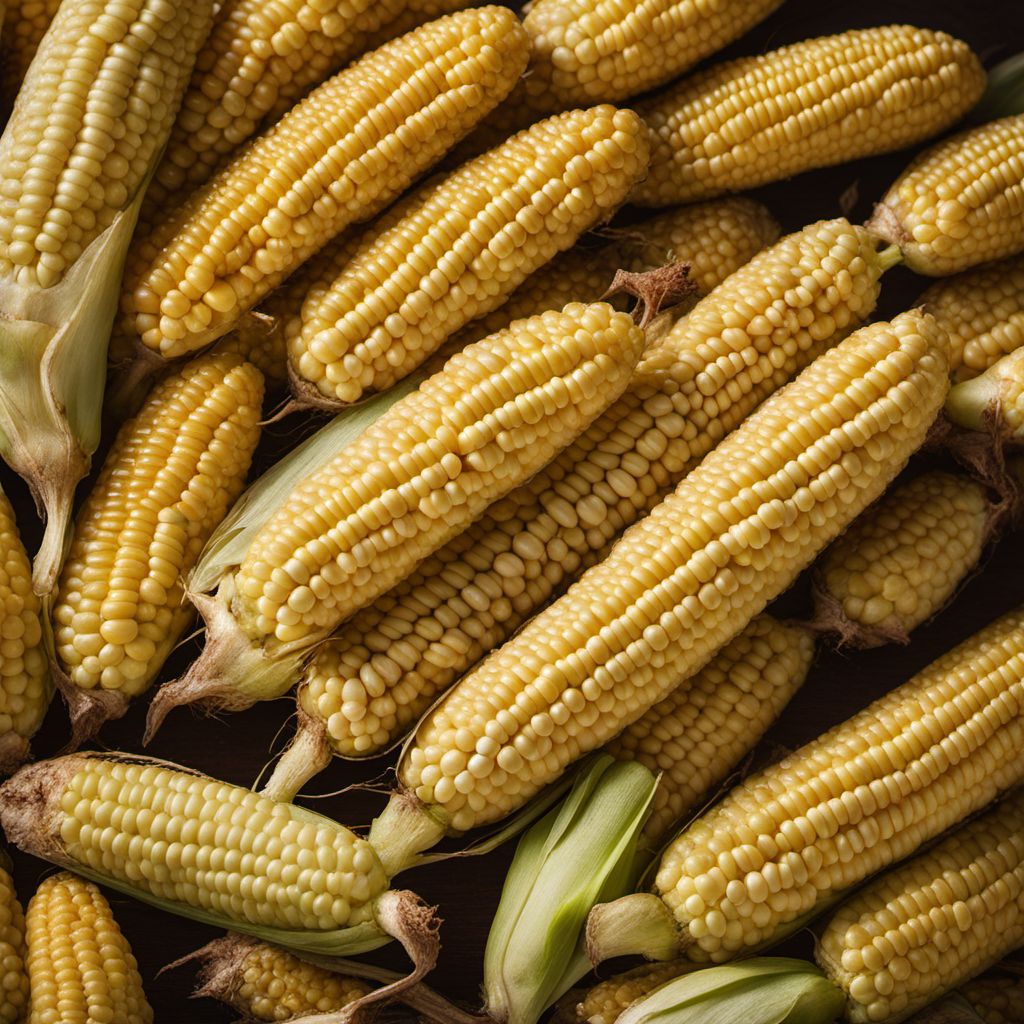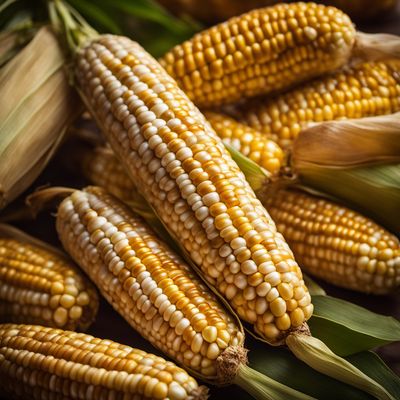
Ingredient
Teosinte grain
The Ancient Ancestor of Corn
Teosinte grain has small, hard kernels that are arranged in a zigzag pattern on the cob. It has a nutty flavor and a slightly chewy texture. Unlike corn, teosinte grain is not as starchy and has a higher protein content. It can be used in various culinary preparations, including soups, salads, and grain bowls.
Origins and history
Teosinte grain is native to Mexico and Central America and has a long history of cultivation by indigenous peoples. It played a crucial role in the development of corn through selective breeding. Today, teosinte grain is still grown in some regions for its unique flavor and nutritional benefits.
Nutritional information
Teosinte grain is a good source of protein, fiber, and essential minerals like magnesium and phosphorus. It is also rich in antioxidants and contains beneficial compounds like zeaxanthin and lutein.
Allergens
Teosinte grain is not known to be allergenic.
How to select
When selecting teosinte grain, look for cobs that are intact and have kernels that are plump and well-formed. Avoid cobs that have signs of mold or insect damage. Additionally, choose teosinte grain that is free from any visible dirt or debris.
Storage recommendations
To store teosinte grain, remove the kernels from the cob and store them in an airtight container in a cool, dry place. They can also be stored in the refrigerator or freezer to extend their shelf life. Properly stored teosinte grain can last for several months.
How to produce
Teosinte grain is a wild grass that grows naturally in certain regions. It is not typically cultivated on a large scale, but it can be grown in home gardens or small farms. It requires well-drained soil and full sun exposure. However, it is important to note that teosinte grain may cross-pollinate with cultivated corn varieties, so it should be grown away from corn crops to maintain genetic purity.
Preparation tips
To prepare teosinte grain, first, remove the kernels from the cob by running a knife along the zigzag pattern. Rinse the kernels thoroughly to remove any dirt or debris. Then, cook the kernels in boiling water or broth until tender, similar to cooking corn. Teosinte grain can be used as a base for salads, added to soups and stews, or used as a side dish in place of rice or couscous.
Culinary uses
Teosinte grain can be used in a variety of culinary applications. It can be cooked and used as a base for salads, added to soups and stews for added texture, or used as a side dish in place of rice or couscous. Its nutty flavor pairs well with a wide range of ingredients and seasonings.
Availability
Teosinte grain is commonly available in Mexico and Central America, where it is native. It can also be found in specialty stores or online retailers that specialize in heirloom or ancient grains.


